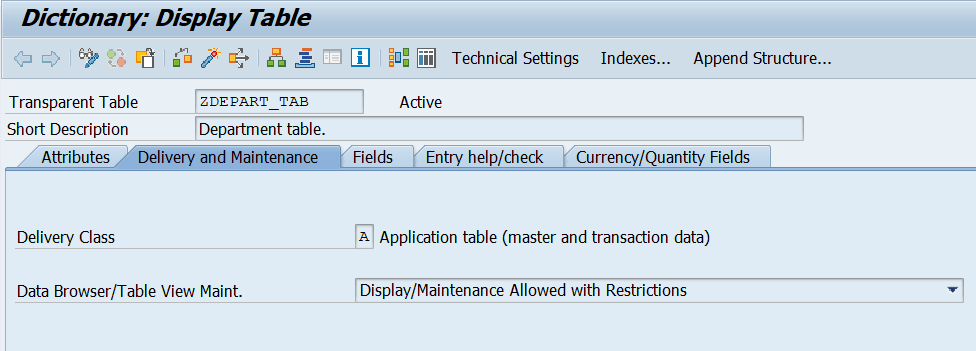Table Delivery Classes define how a table is delivered by SAP, and how data in that table is handled during client copies, upgrades, and transports. Every table in SAP must have a delivery class, and it’s set in SE11 under the Attributes tab.
Why Is Delivery Class Important?
It determines:
- Whether data in the table is customizing, master data, or transactional
- If and how the data is transported between systems
- Whether the data is client-dependent or client-independent
- How the table behaves during client copy or SAP upgrades.
| Delivery Class | Description |
|---|---|
| A – Application Table (Master & Transaction Data) | Client-dependent; used for storing application data like customers, sales, etc. Data is typically not transported. |
| C – Customizing Table (Client-dependent) | Holds configuration data; client-dependent; transportable via customizing request. |
| E – Customizing Table (Client-independent) | Like C, but client-independent. Must be handled carefully as changes affect all clients. |
| L – SAP Table for storing temporary data | Temporary/volatile data; no transport or client copy. Example: log or buffer tables. |
| G – Customizing Table (with text table) | Used with a corresponding text table; data is often language-dependent. |
| S – System Table | Stores system data; client-independent; changes are rare and usually done by SAP only. |
| W – Repository Table | Stores data about repository objects (e.g., table definitions); technical SAP use only. |
Examples:
KNA1(Customer Master) → Delivery Class AT001(Company Codes) → Delivery Class CTADIR(Repository Info) → Delivery Class WT000(Client Table) → Delivery Class S
